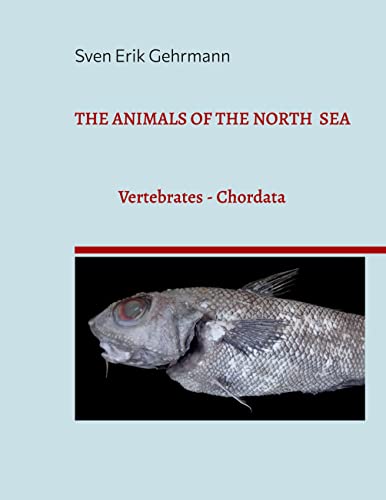Fische der Nordsee / North-Sea-Fish - Nordseefauna2016
Main menu:
- nordseefauna.org
- Rache der Natur / Nature`s Revenge
- Vom Leid der Fischer/Suffering Fishermen
- TNT und Polymere / TNT and plastic
- Die Meeresfauna von Borkum / Norddeich
- Sei das Wunder! / Be a miracle yourself!
- Fische der Nordsee / North-Sea-Fish
- Lederschildkröte / Leatherback Seaturtle
- Ärmelkanalfauna / Engl. Channel Fauna
- Zehnfusskrebse / Decapod Crustaceans
- Upgrading?
- Nordseefauna Geschichte / History
- Ausgestorben! / Extinct!
- Seltene Funde / Rare Sea-Animals
- Schizophrenie / Schizophrenia
- Werte / Values
- Smalltalk der Krebse / Talking Crabs
- Offshore...
- Riffe aus Müll... / Garbage-Reefs...
- Gesunde Meereskost / Healthy Sea-Food
- Autor & Impressum / Author & Imprint
- Meine Publikationen / My Publications
- Pseudonaturschutz - Nature Conservation?
- Thanx!
- Institutionen / Institutions


Fische aus der Nordsee sind doch nur Speisefische, oder?
Seltsam! Für uns ist es selbstverständlich geworden, für die Aquaristik Tiere aus aller Herren Länder zu importieren. Obwohl wir andererseits gleich zwei Meere, nämlich Nord-
Doch gerade die Vivaristik verleiht den Tieren eine viel höhere Wertigkeit, als dieses die Fischerei jemals tun kann. Darüber gibt es -
Allgemeine Hinweise zur Haltung und Pflege von Nordseetieren
Die Haltung von Nordseetieren ist grundsätzlich möglich, wenn man in der Lage ist, den Platzbedürfnissen der einzelnen Arten gerecht zu werden. Dabei sollte von vorneherein klar sein, dass viele Arten exorbitant groß werden können und entsprechende Behältnisse benötigen, um sie dauerhaft artgerecht pflegen zu können. Es mag sein, dass z.B. ein Hummer Homarus gammarus
Fish from the North Sea are only edible fish, aren't they?
Strange! For us it has become a matter of course to import aquarium animals from all over the world. Although, on the other hand, we have two seas, the North Sea and the Baltic Sea, right on our doorstep, from which we could also generate numerous interesting fish for the home aquarium. One of them, the common dragonet Callionymus lyra, was one of the first fish ever kept in an aquarium in Europe in the 19th century. Certainly, the keeping temperature plays a very important role for many animals from the North Sea, but some interesting species can already be kept in a cold cellar or an unheated room. It is sad, that all those who are very seriously involved in the hobby of vivaristics, often have to move in legal grey areas, and that some animal protection associations and politicians would actually prefer to ban our hobby completely. However, this would not only harm the pet trade, but it would also benefit many illegal animal traders who could now charge astronomical prices; not to mention the damage to the smuggled species. Furthermore, our population would become even more alienated and detached from nature and the environment, so that ultimately no awareness of living creatures and ecological interrelationships can be expected any more. Whether this is good for our only secondarily existing and rudimentary nature can be highly doubted. Obviously, private vivarists are not allowed to do anything, while industrial users and corporations are allowed to do all kinds of things. Is such schizophrenia acceptable? (It is really crazy: Someone who catches a few of the tens of millions of gobies living here for his home aquarium in the so-
General information on keeping and caring for North Sea animals
Keeping North Sea animals is basically possible, if you are able to meet the space requirements of the individual species. It should be clear from the outset that many species can grow exorbitantly large and require appropriate housing in order to be able to care for them in a species-
Teil I dieser Buchreihe stellt Wirbeltiere (Chordata) der Nordsee, angefangen bei den Seescheiden über die Rundmäuler, Haie und Rochen, Knochenfische, sowie Robben und Wale, in den Kontext der sich ändernden Lebensbedingungen in diesem kleinen Teil des einen großen Weltmeeres. Dabei werden alteingesessene Arten und Einwanderer aus wärmeren Regionen in einem ausgewogenen Verhältnis dargestellt. Auch Aspekte von Fischerei, Ökologie und Aquarienhaltung flossen in dieses Werk mit ein. Darüber hinaus wurde auch die Präparation von Fischen mitangesprochen. Es wäre sehr begrüßenswert, wenn sich künftig mehr Menschen als bisher mit Pflege und Erhalt der wundersamen und vielgestaltigen Bewohner der Nordsee beschäftigen würden. Denn leider scheinen viele der hier gezeigten Arten einer breiteren Öffentlichkeit weitgehend unbekannt zu sein, weshalb sie in der Praxis leider kaum eine echte Lobby zu besitzen scheinen.
Bestellbar als Taschenbuch oder E-
Die Fauna der Nordsee, Chordata
Part I of this book series puts vertebrates (Chordata) of the North Sea, from sea-
Order

